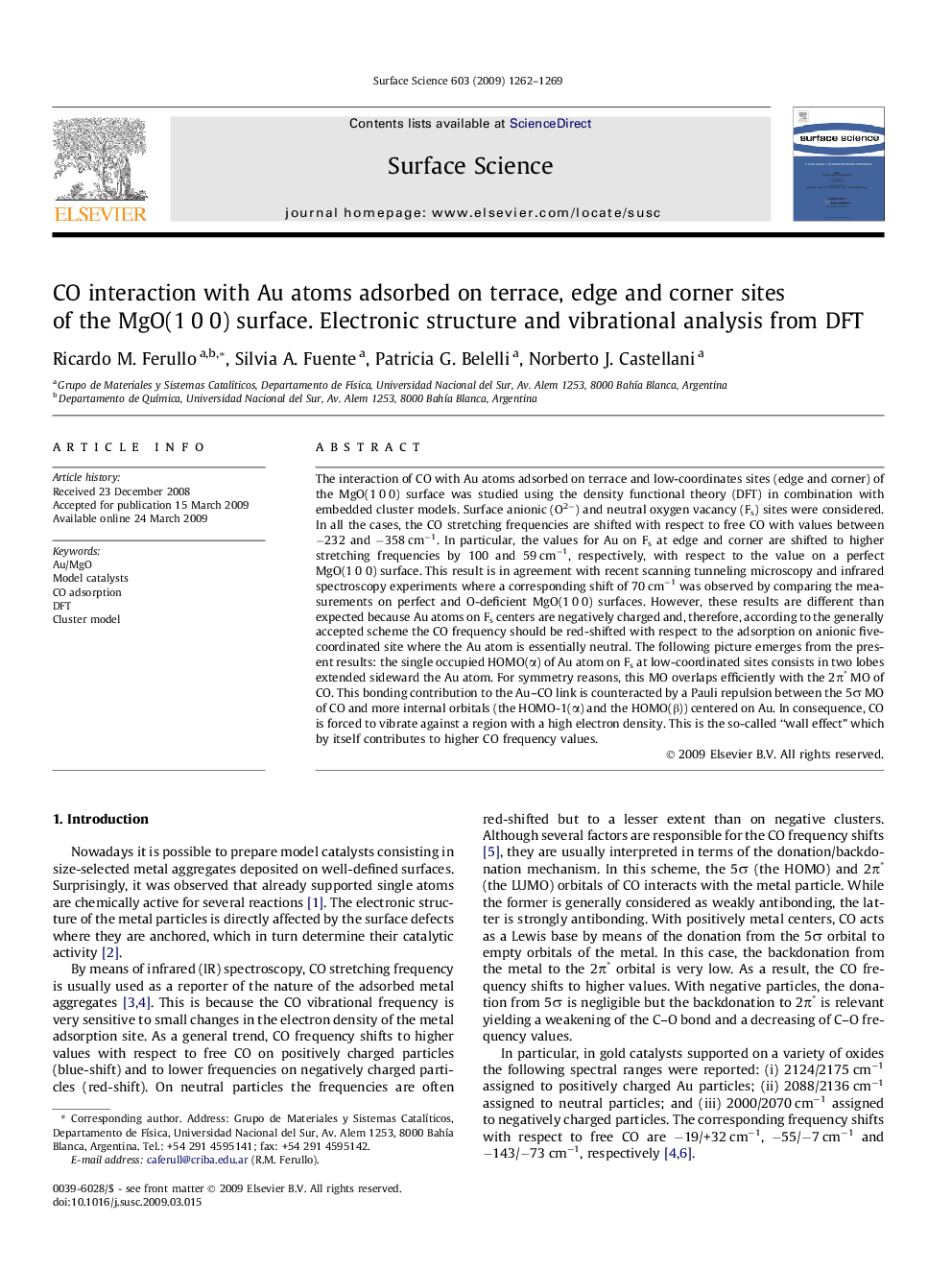| کد مقاله | کد نشریه | سال انتشار | مقاله انگلیسی | نسخه تمام متن |
|---|---|---|---|---|
| 5424582 | 1395829 | 2009 | 8 صفحه PDF | دانلود رایگان |
عنوان انگلیسی مقاله ISI
CO interaction with Au atoms adsorbed on terrace, edge and corner sites of the MgO(1Â 0Â 0) surface. Electronic structure and vibrational analysis from DFT
دانلود مقاله + سفارش ترجمه
دانلود مقاله ISI انگلیسی
رایگان برای ایرانیان
کلمات کلیدی
موضوعات مرتبط
مهندسی و علوم پایه
شیمی
شیمی تئوریک و عملی
پیش نمایش صفحه اول مقاله

چکیده انگلیسی
The interaction of CO with Au atoms adsorbed on terrace and low-coordinates sites (edge and corner) of the MgO(1 0 0) surface was studied using the density functional theory (DFT) in combination with embedded cluster models. Surface anionic (O2â) and neutral oxygen vacancy (Fs) sites were considered. In all the cases, the CO stretching frequencies are shifted with respect to free CO with values between â232 and â358 cmâ1. In particular, the values for Au on Fs at edge and corner are shifted to higher stretching frequencies by 100 and 59 cmâ1, respectively, with respect to the value on a perfect MgO(1 0 0) surface. This result is in agreement with recent scanning tunneling microscopy and infrared spectroscopy experiments where a corresponding shift of 70 cmâ1 was observed by comparing the measurements on perfect and O-deficient MgO(1 0 0) surfaces. However, these results are different than expected because Au atoms on Fs centers are negatively charged and, therefore, according to the generally accepted scheme the CO frequency should be red-shifted with respect to the adsorption on anionic five-coordinated site where the Au atom is essentially neutral. The following picture emerges from the present results: the single occupied HOMO(α) of Au atom on Fs at low-coordinated sites consists in two lobes extended sideward the Au atom. For symmetry reasons, this MO overlaps efficiently with the 2Ïâ MO of CO. This bonding contribution to the Au-CO link is counteracted by a Pauli repulsion between the 5Ï MO of CO and more internal orbitals (the HOMO-1(α) and the HOMO(β)) centered on Au. In consequence, CO is forced to vibrate against a region with a high electron density. This is the so-called “wall effect” which by itself contributes to higher CO frequency values.
ناشر
Database: Elsevier - ScienceDirect (ساینس دایرکت)
Journal: Surface Science - Volume 603, Issue 9, 1 May 2009, Pages 1262-1269
Journal: Surface Science - Volume 603, Issue 9, 1 May 2009, Pages 1262-1269
نویسندگان
Ricardo M. Ferullo, Silvia A. Fuente, Patricia G. Belelli, Norberto J. Castellani,